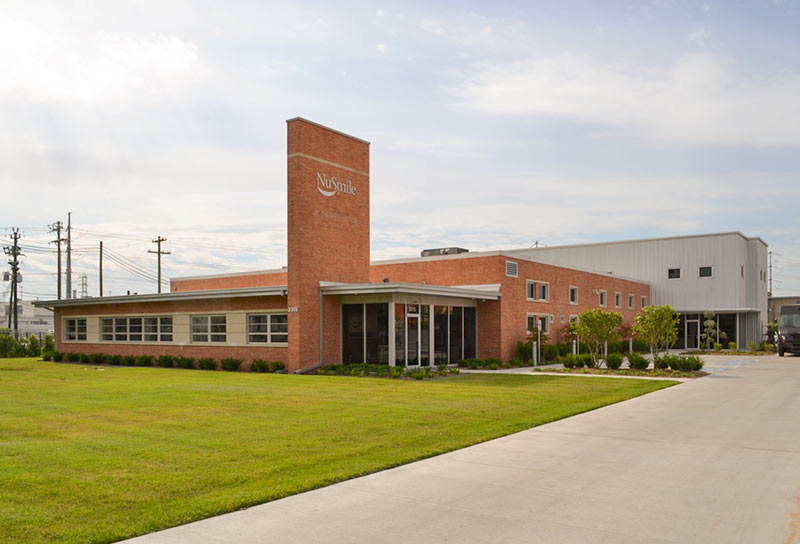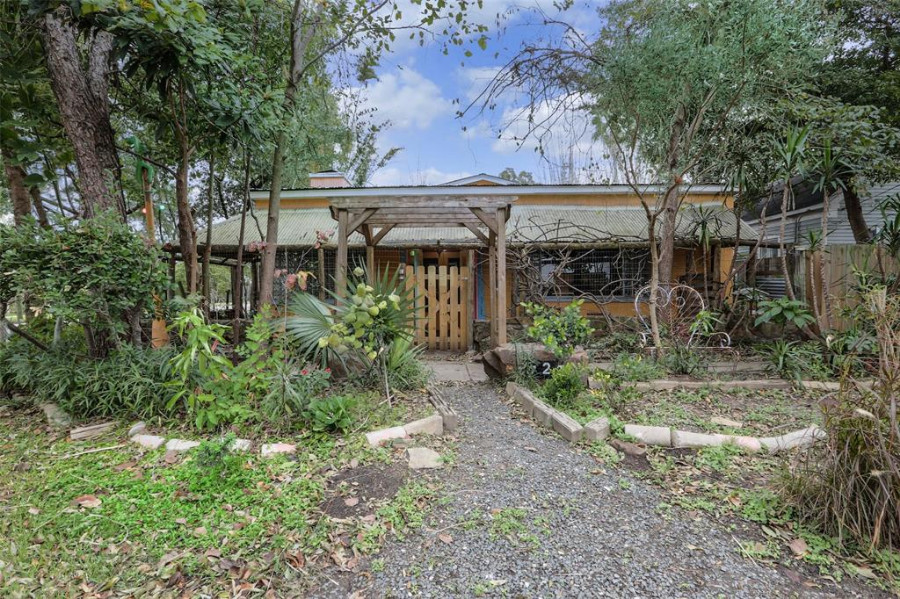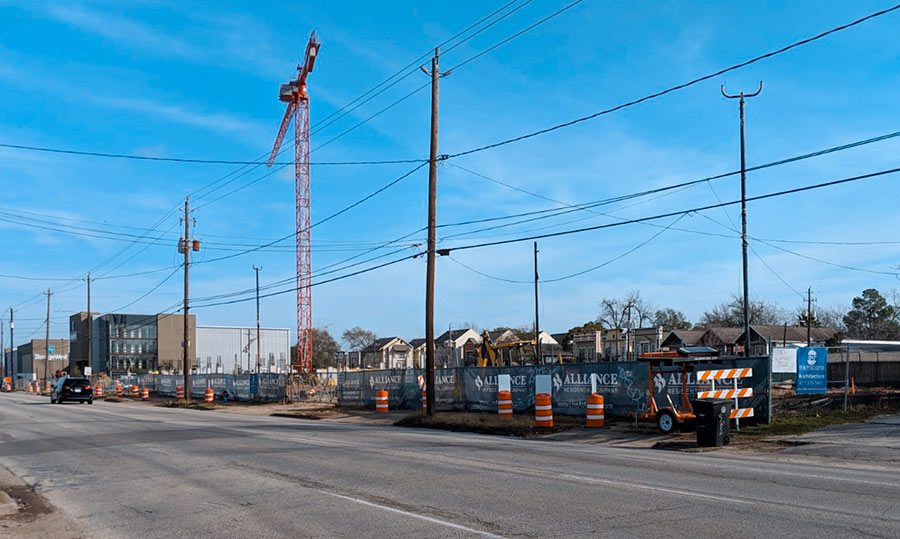
A lowslung brick 1965 building in the warehouse district in the northwest quadrant of the Inner Loop west of Timbergrove Manor and Lazybrook scored landmark status from the city today, marking the first such designation for an industrial, Modern, and suburban (well, at least used-to-be suburban) structure. NuSmile, a company that manufactures pediatric dental crowns, bought the former American Brakeshoe Company building in 2011 and then renovated it, adding a taller 6,140-sq.-ft. metal-wrapped extension to the back of the 8,584-sq.-ft. structure in 2013 and winning a Good Brick Award from Preservation Houston in the process. A report the company submitted with the application notes that “no records of an architect, contractor, or developer have been found” for the original building. Among the former tenants of the property at 3315 W. 12th St.: Smith Industries, TelTex, and TD Rowe Amusements.
Photo: SWCA





Ummm, am I missing something here? Why is this average building been labeled as historical? Houston is ridiculous with their obsession over old buildings.
I think American Brakeshoe Co. was a subsidiary of Callahan Auto Parts empire at one point.
.
Cool building.
I generally like modern architecture, but really….this?
Love, love, love it! Now please plant some trees!
Calling this building “Historic” is like calling a Pinto a “classic” simply because it is old. I think granting historic status to every old structure undermines efforts to preserve truly important buildings.
I think the owner of NuSmile also owns a really awesome house or two in the Old Sixth Ward. Must have a thing for saving old houses/buildings.
Long-term this will prove to be a wise decision. Everything goes through a period where it is not fully appreciated, and that is when most of that era can be lost. The comment around an “obsession” with old buildings in Houston is a joke – – right?
Yalls crazy, this is a good looking buidings. Better than that weak ass stocco stuff they have now and If you had that same attitude in the 50’s then we would have lost a bunch of cool buildings. Oh, wait, snap
It’s an awesome building. Glad someone saw the value of extending its life in our disposable structure and tear down obsessed city.
Agree that this is a nice building and interesting to look at, but it is not historically significant.
–
Does the owner now lose the ability to tear it down and replace it or otherwise modify it? What is the significance of the designation?
I think it’s a cool building and worth of landmark status if the owners desire it. However, I believe it’s a worthless designation in terms of preservation unless you can get a “protected landmark status” which wouldn’t be the intention for this building.
I thought that place looked familiar. I used to work at Tel-Tex back in 1998-2000. I’m not sure what happened to them after that.
Might look at McKee & Kamrath. They did the old Schlumberger building on 45 south. http://www.houstonarchitecture.com/haif/topic/6514-5000-gulf-freeway-the-old-schlumberger-bldg/
Sorry….that would be Mackie and Kamrath per the article. Just thought that looked to be of the same period and design.
I don’t understand what all the fuss is about with these landmarks. History happens everywhere constantly. It is very often the case that buildings get built that are notable or distinct or sited in some way such that you might describe them as landmarks. For instance, you might tell someone to take a right hand turn at a particular corner with a Chase Bank on it. The bank’s existence evidences that it was built in the past, and because it can be used as a geospatial reference point, it is a landmark. Ergo, it is a historical landmark. Is it significant? Yes, it is certainly significant to the people that built it and that have worked there and patronized the establishment. The bank’s being sited there on that particular corner prompted people to go there that would otherwise have gone somewhere else. If it been built on the opposing corner then the site (whether it remained a vacant lot or was developed as something else or as a series of things that were repeatedly demolished) would still have been significant because of what might have been, but wasn’t.
I present to you an analogy: The Allen brothers originally wanted to buy the Harrisburg township and site Houston there, however it was tied up in probate at the time and so they bought land further up the Buffalo Bayou and sited Houston where it is. This event is history. It gave rise to geospatial reference points, including the reference point for a might-have-been location, Harrisburg. It is clearly significant. This event (and Allen’s Landing, specifically, to be site specific) satisfies all of the same preconditions and for the same reasons as a Chase Bank that has been sited on one corner of an intersection rather than an opposing corner.
This logic can be carried over to practically everything that exists or might have existed everywhere, so it is not very useful. Sometimes in the course of human history there exist events that some people think are particularly important, but we’re very flawed in our approaches to judging that and what we’re really witnessing are the emergent properties of a much bigger picture (bordering on the incomprehensible) that are playing out. The delusion that we can comprehend that or ascribe value to it, that’s an element of some of these emergent properties. So sit back and enjoy the show as the city’s aesthetic form morphs over time — but don’t make too much of it. All of this is just about as meaningful as staring into a fractal pattern.
Talk about taking the long way around the block….
There are a number of cool buildings in that section of town, along West 11th and 12th from Seamist out to 290.